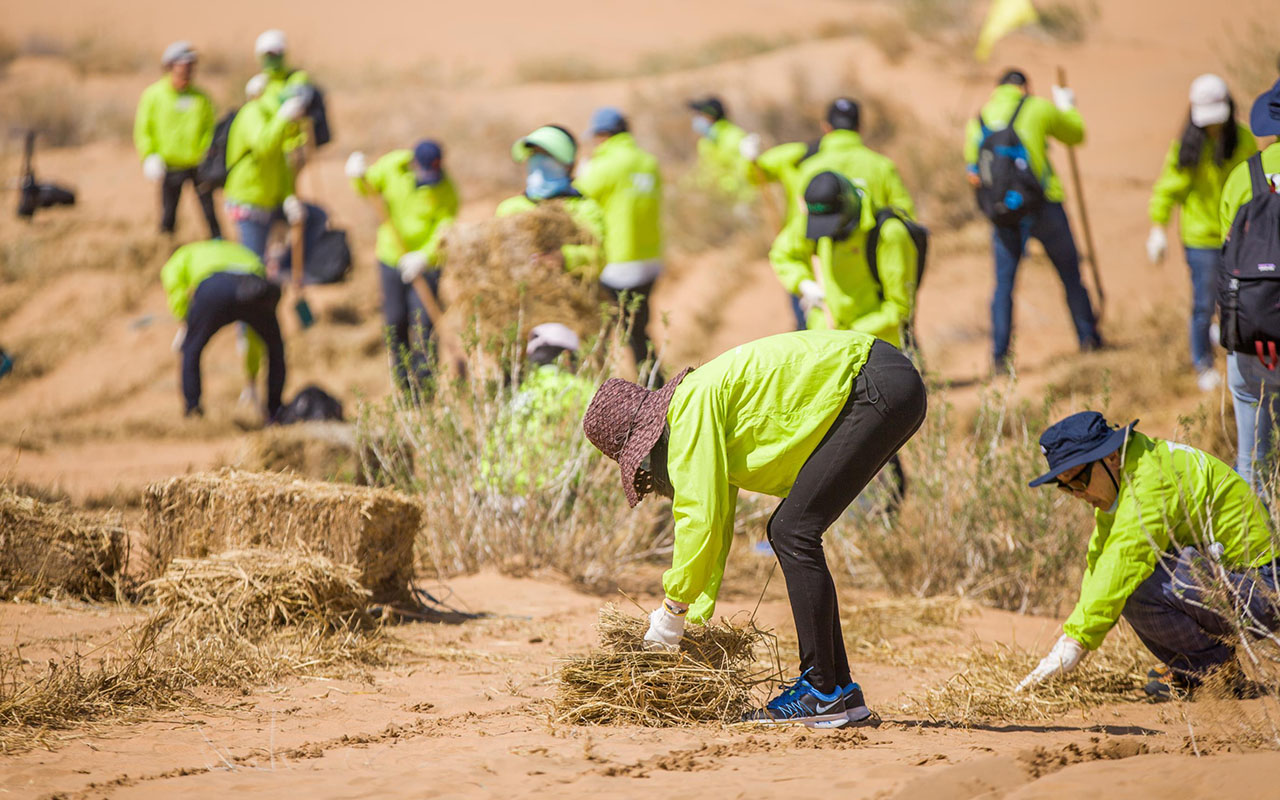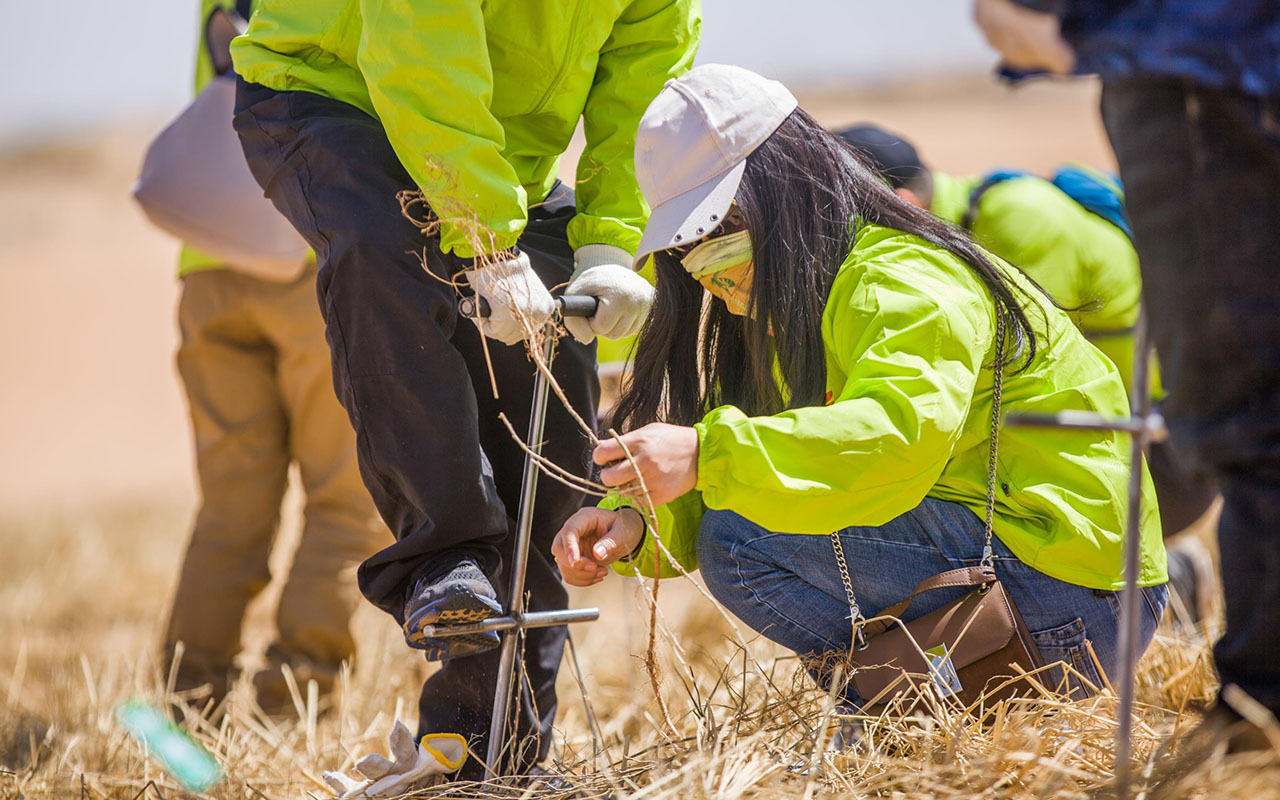Stopping Desertification: Tree Planting Challenge for a Sustainable Future
Aren’t deserts places in faraway lands?
Climate change, water scarcity, resource depletion, and the biodiversity crisis. Whenever we come across keywords such as these, we sense that—one day in the future—we will use up the Earth’s resources. Forests are one of those resources: they play an important role in protecting biological diversity. Now, however, forests are being destroyed and desertification is steadily advancing all over the world.
Incidentally, can you explain what a desert is? Why will more deserts be bad for us? Deserts are not just “places with a lot of sand”: there are many types of deserts, including deserts made of fine clay and soil, and deserts with many huge rocks. The common denominator is that deserts are extremely arid regions where not only humans, but also many plants cannot survive. The phrase “increasing desertification” means that land that was originally lush and green will be transformed into such areas. Every year, 13 million hectares of forest are lost worldwide. This is equivalent to about one third of Japan’s land area.
What if the Earth’s population is growing, but more and more areas become uninhabitable for humans? That’s very troubling, isn’t it?
There are two main factors contributing to desertification. These are climatic factors, such as drought; and human-caused factors, such as rapid population growth and overgrazing of livestock. This kind of desertification is now a problem all over the world. In China, for example, serious desertification has devastated the land and gradually depleted the vegetation. Since the 1950s, the entire country has been working to prevent desertification. We, the Toyota Boshoku group, believe that we have an obligation to do what we can for the sustainability of the countries where we are based, and have been planting trees to contribute to the prevention of desertification since 2013.


What is a global environment where children can live with smiles on their faces?
In 2016, we set ourselves stretch goals as part of our 2050 Environmental Vision which, as the name suggests, looks to the world in 2050. With the vision of “working together with all stakeholders with the aim of creating a sustainable global environment where children can lead their lives with a smile,” we are constantly thinking about what kind of global environment children can live in with smiles on their faces, and are searching for what we can do to help.
One of the themes of the 2050 Environmental Vision is “Challenge of planting 1.32 million trees as part of reforestation activities.” Our lives and cultures have been supported by the blessings of biodiversity. Protecting the areas and forests where endemic species live and restoring their habitats will help to ensure that the lifestyles and cultures that have been built on the blessings of biodiversity will be passed on to future generations.
The Toyota Boshoku group has sites around the world and approximately 50,000 company members. We are working on our Environmental Vision with the hope of drawing on our global network to preserve biodiversity for future generations.
The effects might not be immediately visible, but...
In the Alxa League, located in the westernmost part of China’s Inner Mongolia autonomous region, the Badain Jaran Desert, Tengger Desert and Ulan Buh Desert cover an area of 270,000km2, 93.5% of which is desertified. We are implementing a reforestation project in the Tengger Desert, the fourth largest desert in China, located in the Alxa League. In addition to our company members in the China region, a total of 355 people from business partners and Japan participated in the project, planting approximately 80,000 seedlings on around 58 hectares of land over the eight-year period from 2013 to 2020.
There is little water and the wind is strong in Inner Mongolia. The participants felt uneasy when they saw the sand being blown through the air and the desert stretching out all around them, as they could not imagine that plants could grow there. In order to plant saplings in such a desert, they need to be fixed so that the sand does not drag them away. This means digging a trench, filling it with dry grass to hold the saplings in place, and then planting the saplings in it. This was much harder work than expected. After the work, the participants were exhausted, but they also felt a sense of accomplishment and joy at the thought that the saplings they had planted would be beneficial. By issuing and disclosing the independent audit report of the China Green Foundation, we are also trying to raise interest in the desertification prevention project and further motivate the participants.


However, the story doesn’t end with planting trees. The effects will begin to appear in about three years, but it will take much longer to stabilize as a natural cycle. This is not a cycle that can be managed only by the generation of members who participated in the tree planting. It will fall to the next generation, and to the generation after that. Without handing down these activities, we will not be able to create forests.
Despite the challenges, we plant trees
After planting the trees, the roots will spread, and after three years, the sand in a surrounding area of about 80m2 will be reduced to a solid sand (fixed desert). Once the sand is fixed and the dunes become what are called fixed dunes with a vegetation rate of 35–40% (a figure indicating the percentage of vegetation covering a square frame of green space), it will take many years to eventually become normal land where normal crops and plants can grow.
Based on the results of our group’s tree planting to date, we can say that 81,200 trees x 80m², or 650Ha of desert has been fixed.
In recognition of these activities, Toyota Boshoku (China) was presented with an award for contributing to the ecosystem in China by the State Forestry Administration in September 2018, and received the Best Contributing Corporation Award from the China Green Foundation in 2019. These awards were presented in recognition of the continuity and social impact of the reforestation activities that have been carried out in the Tengger Desert for seven years with the aim of preventing desertification.
China is also aiming to achieve peak CO2 emissions by 2030 and carbon neutrality by 2060. We believe that reforestation can contribute to the realization of these goals.
Reforestation is a step-by-step activity that takes time. Nevertheless, by tackling environmental issues head-on through this activity, we are finding value that goes beyond simply “planting trees.” For example, the activities foster a sense of unity among the local entities and raise the environmental awareness of our company members. Becoming a company that is trusted and needed by the local community through continuous social contribution activities: reforestation creates significant value for all of us.
In addition to China, we have also conducted tree planting activities in Japan, Thailand, Vietnam, Turkey, Canada, and other parts of the world. We will continue to take on challenges to achieve the goals of our 2050 Environmental Vision and become a company that is needed by local communities.

 Media site to convey the Toyota Boshoku group vision for the future and initiatives
Media site to convey the Toyota Boshoku group vision for the future and initiatives



